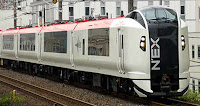There was a violent uplift at the sea floor 80 miles off the coast of Sendai, where the Pacific tectonic plate slides beneath the plate Japan sits on that caused the most powerful earthquake recorded in Japanese history. With a magnitude of 8.9, this was the sixth largest earthquake in the world. The most devastating earthquake to strike Japan was in 1923, when a magnitude 7.9 tremor devastated Tokyo and Yokohama and killed an estimated 142,800 people. The largest waves measured by instruments in the water were 7 meters (nearly 23ft) high in the north-east of Japan, according to the Pacific Tsunami Warning Centre (PTWC) in Hawaii. Other estimates put the wave height at 10 meters
N-H-K reports how the World Health Organization has concluded there is no radiation danger outside of the Fukushima nuclear plant’s 30-kilometer safety zone. It is also confident enough about the future state of the nuclear plant to state that there is no public health reason to avoid travel to Japan and no reason for people to evacuate from the country
The overall level of the advice has not changed; we advise against all but essential travel to those areas in north-east Japan most directly affected by the March earthquake and tsunami
We advise against all travel to within a 60km radius of the Fukushima Daiichi nuclear facility. This is based on the latest scientific advice from the Scientific Advisory Group in Emergencies (SAGE). The Tokyo Metropolitan area and Narita airport lie outside this zone.
In Tokyo, operations are largely back to normal, although you should check before you travel as some routes, including the Narita Airport Express, may be operating limited timetables. Transport in western Japan, including Osaka, is not affected
It is safe to eat the food and drink the water in Japan since the earthquake.
http://youtu.be/YYsxYOiaHns






































